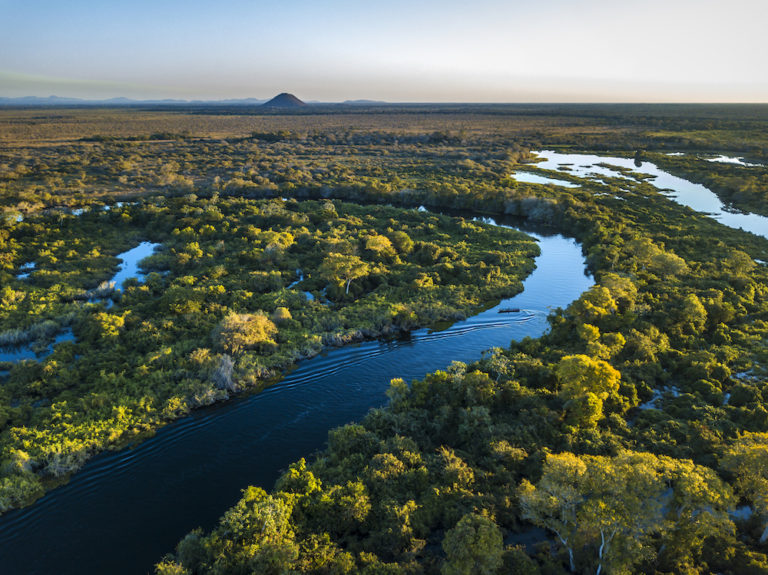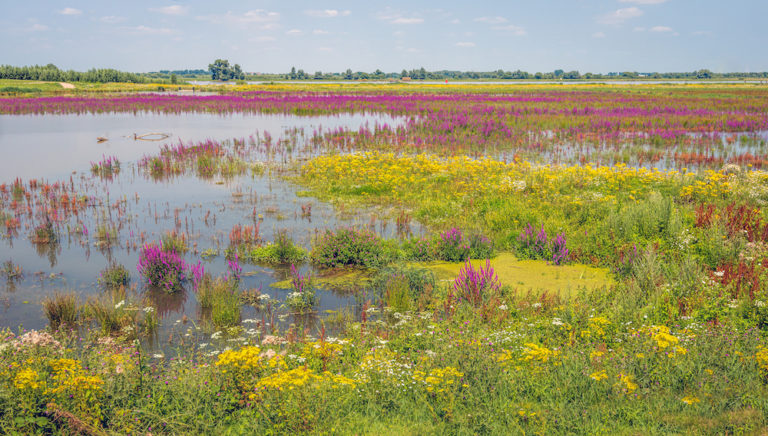[ad_1]
Scientists are calling for urgent action after a new report reveals that the 2030 targets to reverse biodiversity decline may already be out of reach.

Biodiversity is the variety of all life on Earth. A wide variety of plants and animals working together is necessary for human survival. Furthermore, plants are incredibly important for improving our physical environment such as limiting rising temperatures, cleaning the air, and providing protection against climate change.
The evolution and extinction of species is normal, but the extinction rate is now between 100 and 1000 times faster than scientists expect. Scientists have warned that humans may be the cause of the ‘sixth mass extinction’ on earth, reports the BBC.

Color palette of flowering wild plants in a flooded part of the Noordwaard polder adjacent to the De Biesbosch National Park in the Dutch province of North Brabant.
The UN’s Biodiversity Body, or IPBES, has estimated that over one million plants and animals are currently at risk of extinction. However, the threat of extinction varies, and not enough species have been observed for the risks to be accurately assessed.
The damage done by overfishing, hunting, harvesting, and logging has caused the world to lose over 437 million hectares of tree cover, and the loss of mature forests ‘can have a very serious impact on biodiversity.’
The Caribbean and Latin America have seen the highest losses in animal populations, with a 94% decline since 1970 due to habitat overexploitation and destruction.
The rate at which climate change progresses is also difficult for plants and animals to cope with.
At the UN’s COP15 summit, the member countries ‘reached a historic agreement to protect 30% of Earth’s land and seas by 2030.’
Known as the Kunming-Montreal Global Diversity Framework, the agreement aims to stop and reverse the biodiversity decline by 2030, and for ‘humans to live in harmony with nature by 2050.’

River of the Amazon and the fog over the river and rainforest early in the morning
The four main objectives are increased conservation of species and ecosystems, using resources as sustainably as possible, increased equal sharing of natural resources, and increased financial support for biodiversity protection.
Governments and private organisations have pledged $200 billion annually by 2030, with richer countries increasing the amount they send to poorer countries for biodiversity projects to $30 billion annually.
The agreement however is not legally binding. Furthermore, a recent study shows that the targets may already be out of reach as the ‘effects of climate change and habitat loss on animal population have been underestimated.’ Scientists are calling for urgent action.
Pictures: GettyImages
Follow us on social media for more travel news, inspiration, and guides. You can also tag us to be featured.
TikTok | Instagram | Facebook | Twitter
ALSO READ: African penguins: climate refugees from a distant past?
[ad_2]
Source link
Jarastyle – #Study #shows #targets #reverse #biodiversity #decline #inadequate
Courtesy : https://www.getaway.co.za/travel-news/study-shows-targets-to-reverse-biodiversity-decline-may-be-inadequate/

